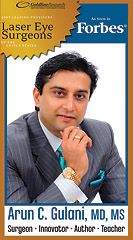
Strengthening your Self-Defense against Diseases – Part vI
is there a role for ‘pet therapy?’

One day, as I walked into the intensive care unit, I saw an interesting sight — a big Golden Labrador playing with one of our patients, right in his bed, jumping all over him. Both the dog and the master appeared to be happy.
“I thought pets were not allowed inside the ICU, certainly not in a patient’s bed,” I said to the nurse.
“But you told him yesterday, “Anyone can visit him at any time except late in the night?” the nurse looked at me with a gentle smile. “He may be end-stage, you said, remember?”
But I wasn’t expecting a canine visitor. Actually, the patient was admitted with shortness of breath that turned out to be from a large malignant pleural effusion (fluid in the pleural cavity covering the lung). After removing a couple of liters of fluid, he felt remarkably better but it turned out his lungs were already invaded by cancer. He didn’t take to the news well and was depressed, almost non-communicative at times. The nurses were looking for ways to cheer him up. So the wife decided to bring his pet dog, Robby, his constant companion. And he perked up quickly, started laughing and became quite cheerful. Mission accomplished.
I myself was benefited by a pet cat when I had to take an enforced three weeks’ rest after a major surgery a few years ago. My spirits were down and energy at a low ebb. That was the time one of the neighborhood cats wandered into our premises looking for food. Soon, he became a regular visitor and we his surrogate parents. And this delighted me to no end. The animal clearly helped to speed up my recovery process.
Often, we don’t realize the importance of pets and the role they play in our lives to make us feel good. When I had to admit an elderly woman with chest pain, the first thing she wanted was to go home and entrust her dog with the neighbor before checking into the hospital. Another one with depression and anxiety became quite cheerful after she adopted a pet dog. Why do we love our pets, especially cats and dogs? And how do they make us better? They give you unconditional love and support for one thing. Nothing can replace the companionship and the feeling of well being we feel when we have a pet to take care of at home.
“Pet therapy,” according to Mayo Clinic, “is a broad term that includes animal-assisted therapy and other animal-assisted activities. This is a growing field that uses dogs, cats or other animals to help people recover from or better cope with their health problems, such as heart disease, cancer and mental health disorders.” There have been many scientific studies about the positive effects of pets on human health. One study even showed that having a cat or dog at home could cut your heart attack risk by almost a third!
So, who can benefit from such therapy? We already know about ‘seeing eye dog’ for the blind. Now there are specially trained ‘service dogs’ used by children and adults to help them with their disabilities and gain more independence. From detecting blood sugar fluctuations in diabetics to calming those with autism, anxiety and depression, or helping cancer patients undergoing chemotherapy, these service dogs can be a true blessing.
Human health is sometimes a difficult concept to define. It is just more than absence of disease. It is the sum total of factors that include ‘well being’ and ‘quality of life.’ Domestic animals share our environment in a variety of ways. They become our constant companions in and around our homes or even during travel. A great majority of them are cats and dogs. I often recommend to my patients who are depressed or anxious and living alone, to acquire a suitable pet. And when their pets die or run away, they become miserable and suffer from ‘pet separation syndrome.’
It’s time that pet therapy got a serious nod from doctors as an adjunct to conventional management. America’s love affair with pets and animal kingdom in general, is well justified. One of the popular shows on TV – “America’s Funny Videos” – always present a few clips on funny animal behavior that make you laugh out loud. A recent issue of ‘Parade’ magazine did a photo contest on ‘Our Animal Friends’ (and their human pals too!). Guess how many entries they received? 142, 000!
Life becomes richer and meaningful only if there is love to give and love to receive.
M.P. Ravindra Nathan, M.D., is a cardiologist and Emeritus Editor of AAPI Journal. His book “Stories from My Heart” was recently released. (www.amazon.com or www.bn.com).
Eye Care
Happy Diwali! What lens are you buying? – PART I

This Diwali, the riches to compare and flash is neither diamonds, nor gold. The present currency is the lens Implant for your cataract surgery. The cost of this implant is a direct correlate to how much your loved ones really love you.
So, you go to your eye doctor’s office and are diagnosed with cataracts. Before you can mourn about this obvious testimonial to having aged (or as I suggested in my previous column, smiling about your opportunity to see), you are given a menu of lens implants to choose from – a full range of affordable to magical!
You leave your eye doctor’s office scratching your head and turn to your trusted source of medical information – Google!
Industry already knew that would be your only recourse and built widespread advertisement campaigns online. Thus, you are smothered with choices explained in terms they hope challenges your aging brain enough to help you succumb to the shiniest and most expensive technology. And somehow you justify this as a mark of wealth that could still invoke the gods in all their glory during Diwali.
OK, let’s get serious.
What lens implant to choose and how to understand its impact on their vision? This is the most confusing thing many patients today face once they are diagnosed with cataracts.
I shall divide this important topic into three columns/sections: first one addressing how to select the best implant for you; the second column will be focused on what to do with side effects; and the third will be dedicated on how to correct complications, which includes exchanging of lens implants.
All of us understand that during cataract surgery, the cataract is removed and an artificial lens implant is inserted in our eye. Until recently, there were no choices and life was simple, boring and monofocal!
With technology innovations, we now have lens implants that come with various functions, including Multifocal (Progressive) to help you see distance and near, Toric (to correct astigmatism), Bifocal, Trifocal, photocell and even re-chargeable (like I have described in the previous columns). A thorough exam of your eye, including its optics and health, can help decide which lens implant will most likely result in vision without glasses at distance and near.
I encourage you to believe that your surgeon is more knowledgeable than Google and you must ask him/her questions about pros and cons and possible expectations. How the lens implant chosen for you works and how will that translate to vision for your individualized goals. What are the possible side effects and what solutions are available if so? Also, have you been offered all lens implants choices available or only those available with that surgeon/office?
Do clearly outline your vision goal (distance vision, near vision or both and do you have to have perfect night vision, etc.).
Most usually, a combination of your vision goals along with your surgeon’s selection of the lens implant in your best interest can lead to a satisfactory outcome. Anything less than this and you may become a statistic.
Emotions usually run high because of the cost of these implants beyond insurance and hence expectations must be clear before surgery.
Poor lens implant choices can lead to haloes and star bursts that can challenge the splendor of many a Diwali lights.
By the same token, proper selection of the lens implant and surgical technique is one of the most gratifying surgical outcomes in modern medicine today with a vision outcome that lasts a lifetime with well-earned bragging rights enough to divert the attention from Solitaires and Rolexes to the proud shimmer of your eyes.
This Diwali, I can envision groups of well-dressed people looking into one another’s eyes comparing their sparkles and testing their vision at all distances even before drinks are served.
Arun C. Gulani, M.D., M.S., is director and chief surgeon of Gulani Vision Institute in Jacksonville. He can be reached at [email protected] or visit www.gulanivision.com